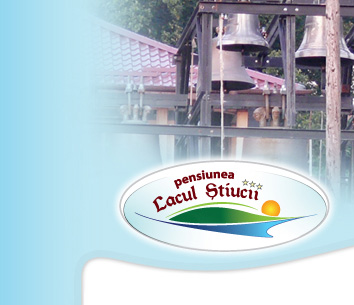The Brewing of Plum Brandy
01.10-10.11.2013
This is a product inherited from Dacian and Celtic times.
In Transylvania there are a lot of people who believe that the tradition of the plum brandy dates back to antiquity. This drink made from fruits was brought here by the Celts who settled between the Dacian tribes.
In fact, the recipe of plum brandy (horinca or palinca) is an ancient one. People gather the fruits in the summertime. Then they place them in huge barrels. Afterwards the fruits are crushed by a machine with serrated wheels. Now the fruits are left to ferment in special nests, i.e. in barrels made of pine or oak. At the end of the month of October and the beginning of November due to cold weather the inhibition of the yeast, which through fermentation transforms the sugars of fruits into alcohol takes place. This is why mid-fall is considered the most proper time for brewing.
Brewing is a ritual indeed. The villagers load the barrels in carriages or in cars and transport them near to some wooden shacks at the edge of the village. There are the fireplaces raised from stones or bricks into which huge kettles are built in. You can only see the big top of these brandy kettles. The crushed and already fermented fruits are deposited into these kettles. This strong smelling, reeking paste is called marc (borhot). Then fire is started with pine wood only, prepared beforehand. The brandy kettles are connected to a complicated system made of aluminum or copper pipes. As this special smelling paste starts to warm up people have to continuously turn on a handle in order to prevent it from catching fire or from sticking to the bottom of the kettle. Suddenly the air of the shack is filled up with a special perfume. This is the first sign that boiling has started. Alcohol and water steam start rising from the crushed fruit which are being captured by the system of pipes. Since alcohol boils at a lower temperature than water, this is the phenomenon employed by people for the separation of alcohol from water. The vapors are cooled by another pipe system through which cold water flows permanently. Alcohol transforms from vapors into a colorless liquid which is collected in containers ready placed by the brewers.
The Feast
From time to time those people who want to brew their own brandy taste the liquid. The moment the strength of the alcohol is not the desired one, it means that water vapor starts replacing alcohol vapors. So the container with the alcohol is removed and hot water starts to flow but this does not interest anybody. But the brandy is not ready as of yet, although the alcohol vapors and the tasting got people joyful. All of a sudden this joyful atmosphere takes over everybody. Usually this happens around sunset. People, tired of working around the brandy, look for their food. The sweet cheese made of sheep milk, smoked bacon, the sausages, the liverwursts are the most frequent ones. The feasts end with plum pies, ricotta, sweet cheese or cabbage filled pies. Sometimes in the bags of those who have come to brew there are linzers as well, the delicious apple-filled cakes with cinnamon. For the feasts the fiddlers of the village are invited as well and they invigorate the party.
If the weather is pretty nice the feast takes place outside the shack, at an improvised table made of log. There would be a camp fire burning next to the table and people would fry their bacon and sausages. While meat is sizzling or bacon stuck on special sharpened sticks is browning at the aromatic resins that melt while the wood fibers crack, people get ready for the second batch of brewing. The liquid rich in alcohol is introduced for the second time in the brewing kettles. The embers under them are lit anew and people return happily to the shacks. The kettles are warmed up again and through the complicated pipe system liquid start to circulate. This time, it is the real brandy that we talk about. People taste from the brandy in a very satisfied manner and then they start filling up the huge glass containers which are protected by osier braiding. Sometimes the second brewing lasts all night long. In the morning the heavy glass containers are cautiously placed in carriages or cars and everybody leaves for their homes. The worthiest brandy is the one made from plum. The best plums are the ones bearing the name of Bistrita (a town and a county in the Northern area of the country). It is about a big sweet fruit with soft blue shell. These plums are not only the best for brandy but also for a special sweet thick gem called “magiun”. When the gem is ready the seeds of the plum are cautiously gathered and then crushed well. They are thrown in the marc prepared for the brewing because they add a special aromatic taste to the brandy which is placed in oak barrels. In time it takes over the taste and hue of the barrel and poured in glasses looks and tastes like a very good quality brandy. While plum brandy is the best the Transylvanians are very knowledgeable in brewing brandy from other fruits too, like: apples, cherries or apricots. Cherry brandy is among the most expensive ones. For aging it is placed in mulberry barrels. In the Western Carpathians the most appreciated brandy is made from raspberry. The people living there, called “mot”, gather the ripe, red, flavored and juicy fruits that they ferment. Sometimes they put a few blackberries next to the raspberries as well in order to make the more refined.
